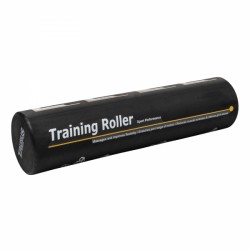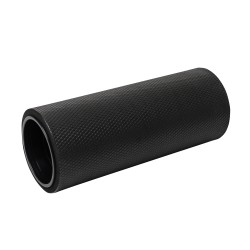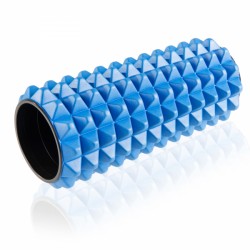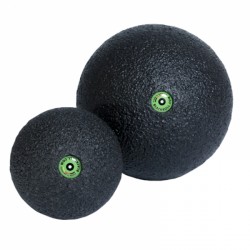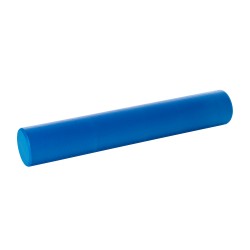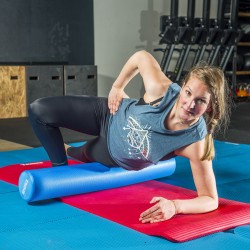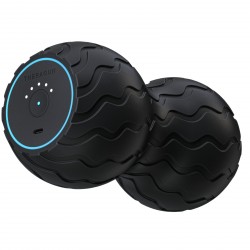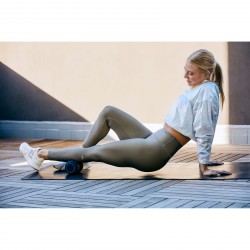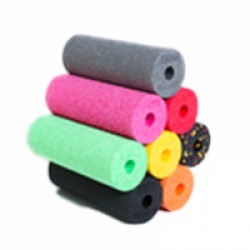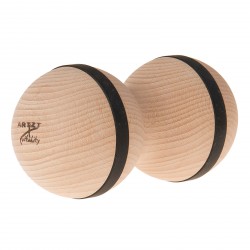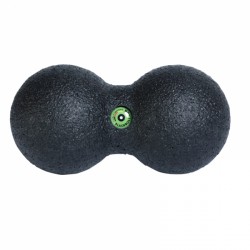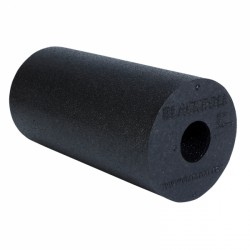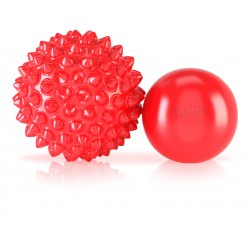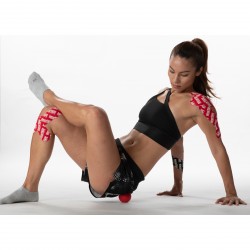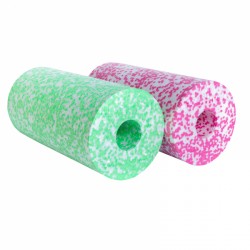Buy Fascia Massage Rollers & Triggers from Europe's No. 1 for home fitness
-
€39.90 -
€22.90 -
€24.90 -
from €8.83 -
€39.90 -
€109.00 -
from €7.83 -
€30.95 -
from €18.90 -
€40.90 -
€20.90 -
from €32.90
Fascia rollers or massage rollers are small practical devices for self massage, loosening muscles and the so-called self myofascial release, that means for loosening fascias or the connective tissue. While the basic principle of those massage devices is always the same, there are still differences between the fascia rollers, which we would like to explain in our fascia rollers guide.
The main differences of fascia rollers refer to shape and size, hardness, surface structure, material, colour, and price. They also differ in the name: while Blackroll or The Grid are brand or model names, the term foam roller refers to the material. The most relevant descriptions are fascia roller or massage roller.
Purchase advice for size and shape of fascia rollers
It's not only a questions of size and shape of the rollers but mainly the question of training targets or use. The classic fascia roller are really simple rollers of a diameter of about 15 cm and a length of about 30 to 60 cm. There are also some special shapes like the massage balls or sticks. These are additional devices for responding to special muscle and body parts more precisely.
Fascia rollers with a length of about 30 cm are the most well-known for training or massaging all body parts. That means they can be used for all exercises of fascia training and are always a good choice. When you wish to focus on other uses or the massage of certain muscle parts, you should think about an additional massage device. The 30 cm long models are all-rounders; some back exercises can be done more comfortably with the 45 to 60 cm long models.
Long (more than 60 cm), soft rollers are also called pilates rollers. They rather focus on the exercising effect rather than on the massage effect, i. e., for training of stabilisation and balance. They also do not have a hard core, thus they are softer so that long exercises can be done with them. It's mainly the back that can be mobilised with the pilates rollers.
A very short version is the Blackroll Mini with a diameter of just 5 cm and a length of 15 cm. These are suitable for massaging forearms of feet, especially the plantar fascia. Such a small foam roller is essential for runners. Single balls or double balls made of foam are perfect for massaging the bottom of the foot as well as neck or back.
Degree of hardness of a massage roller
The hardness of fascia rollers is a decisive factor for purchasing a massage roller besides size/shape. Soft rollers are better for starting training and for very light persons. A middle degree of hardness mostly requires a short time of getting used to it, but then it increases the training effect distinctively. Those, who are already used to using fascia rollers and want to develop, should use a very hard massage roller.
Harder rollers are felt to be rather uncomfortable by training beginners, thus it might be a bit painful. You will get used to it soon and the hardness is in general a very important argument for a fascia roller. It's worth to have several different degrees of hardness at home for different body parts: for back and calves, i. e., the hard rollers are great, while it can be softer for the shin.
Training rollers classified according to the degree of hardness
- Soft rollers for training beginners, very light persons or for high sensation of pain
- Middle degree of hardness for sporty persons and middle weight, initial pain gets less after few treatments
- Hard fascia rollers for very sporty persons with low sensation of pain for daily use
Surface structure of a massage roller
The original foam roller only had an even surface, like it is still known from the Blackroll. There are also fascia rollers with nubby or grooved surfaces. The surface structure of the Triggerpoint massage roller is meant to imitate the human hand. This surface structure should give additional massage stimuli.
Nubby surfaces are very good for treating so-called pain points. Pain points can be especially treated by the training with these rollers and thus be avoided permanently. Muscles and body parts which are difficult to reach and are often used in daily life due to malpositions, can be demanded more intensively and can be returned to their intended initial state by means of a blood-flow-supporting massage and a simultaneous deep breathing.

